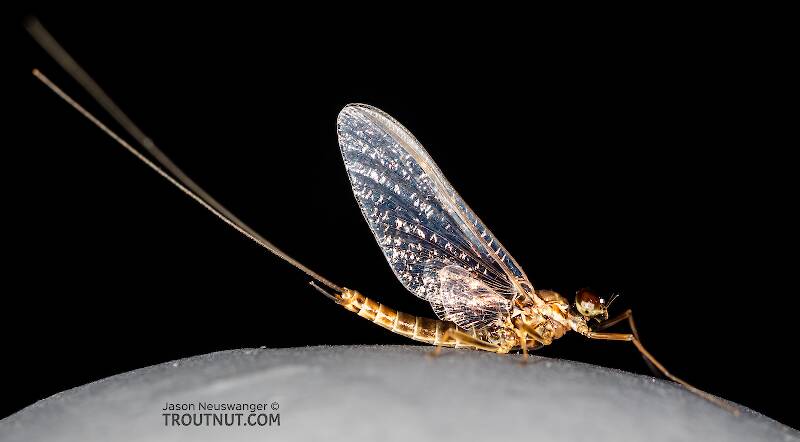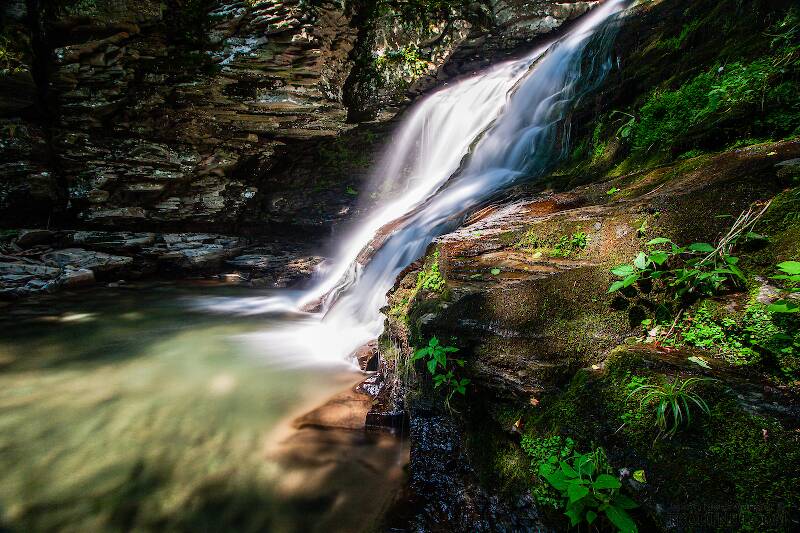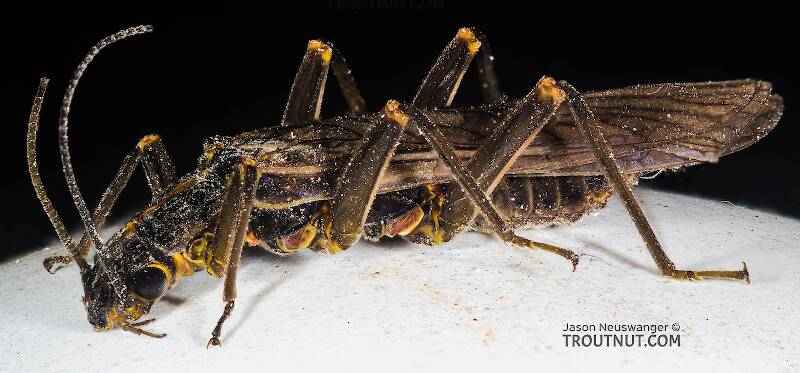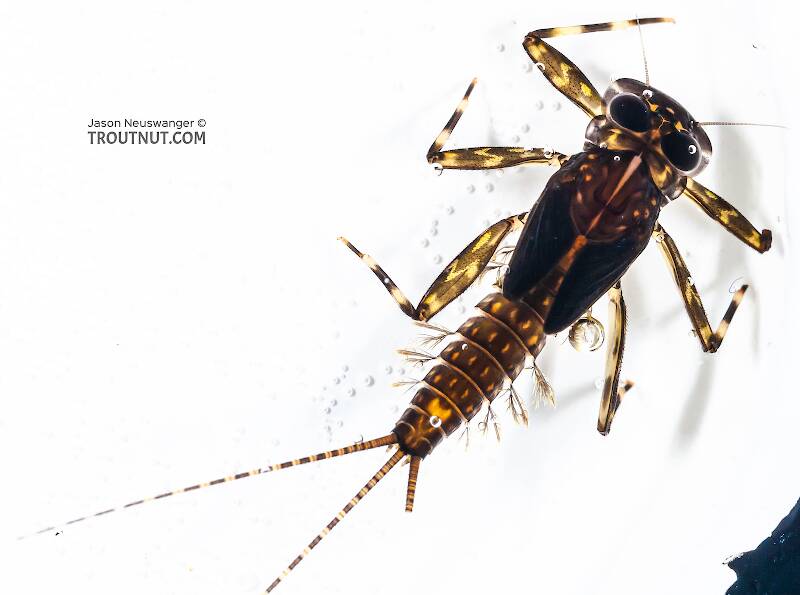
Blue-winged Olives
Baetis
Tiny Baetis mayflies are perhaps the most commonly encountered and imitated by anglers on all American trout streams due to their great abundance, widespread distribution, and trout-friendly emergence habits.
Featured on the forum

Troutnut is a project started in 2003 by salmonid ecologist Jason "Troutnut" Neuswanger to help anglers and
fly tyers unabashedly embrace the entomological side of the sport. Learn more about Troutnut or
support the project for an enhanced experience here.
Western Red Quills
Like most common names,"Western Red Quill" can refer to more than one taxon. They're previewed below, along with 2 specimens. For more detail click through to the scientific names.
Mayfly Species Paraleptophlebia gregalis
These are sometimes called Western Red Quills.
This species produces fishable hatches, but it is not well-known in angling literature. This is due primarily to its range, which consists only of California and parts of Oregon. It is a small (by western Paraleptophlebia standards) Spring emerger that fills the niche taken by Paraleptophlebia heteronea in the rest of the West.
Mayfly Species Heptagenia elegantula
These are very rarely called Western Red Quills.
The spinner falls of this elegant species can be quite important to anglers across the West. Recent revisions have synonymized the Midwestern species Heptagenia diabasia that may be of some local importance.
Mayfly Species Rhithrogena undulata
These are very rarely called Western Red Quills.
This is one of the two most common species of Rhithrogena.

This male was collected at the same time as this female and is likely the same species.
It keys pretty clearly to Rhithrogena undulata using the key in Traver 1935, although the size is larger than expected for that species in that source.
It keys pretty clearly to Rhithrogena undulata using the key in Traver 1935, although the size is larger than expected for that species in that source.
See 1 more specimen...



